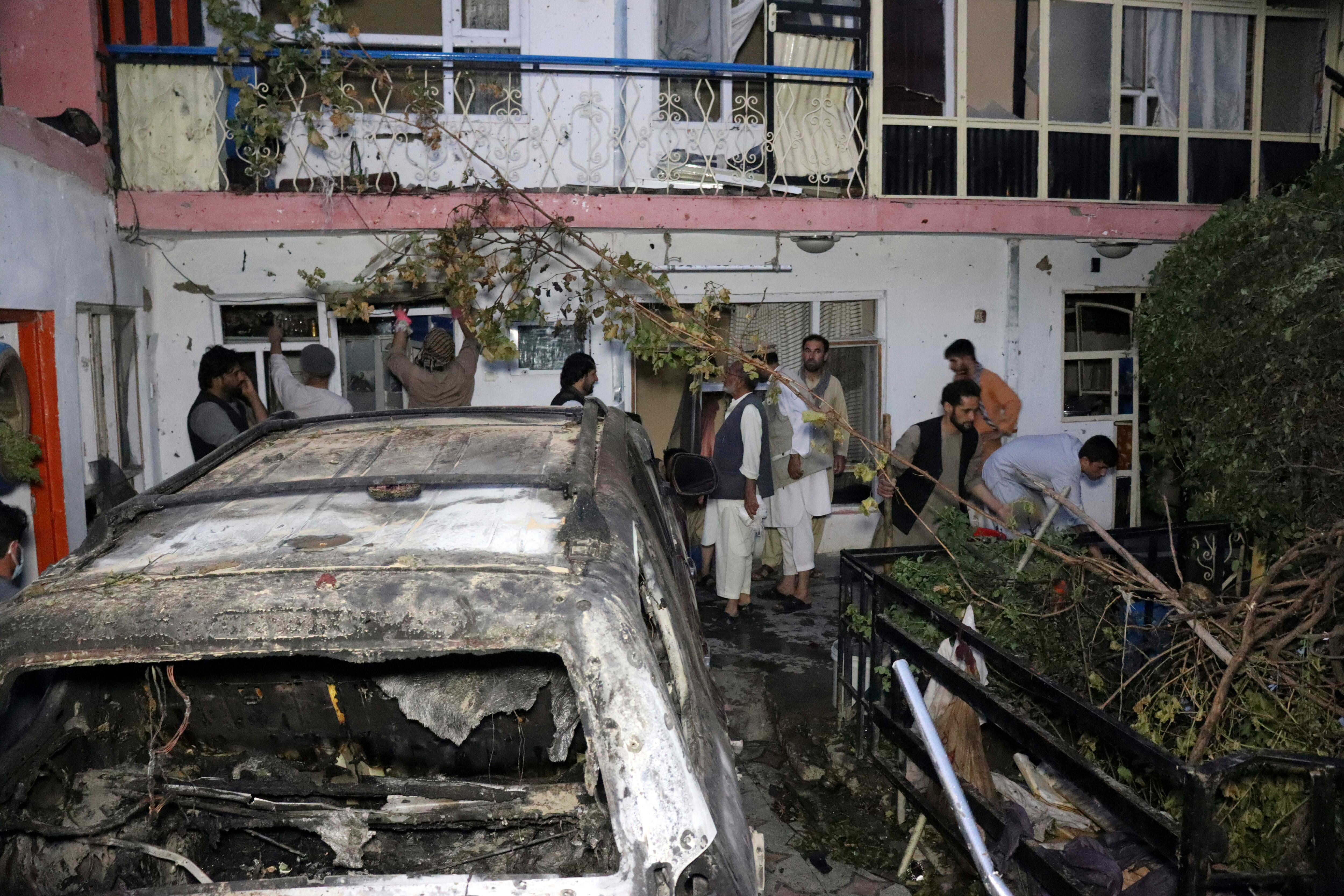Civilians may have been killed in the latest U.S. drone strike against a “senior al-Qaida leader and planner” in Syria, officials from U.S. Central Command acknowledged.
The Tampa, Florida-based command is investigating the incident, officials said.
“We abhor the loss of innocent life and take all possible measures to prevent them,” said Navy Capt. Bill Urban, CENTCOM’s chief spokesman, in a statement about the Dec. 3 attack by an MQ-9 “Reaper” drone. “The possibility of a civilian casualty was immediately self-reported to U.S. Central Command. We are initiating a full investigation of the allegations and will release the results when appropriate.”
The individual targeted was killed, Lt. Col. Karen Roxberry, a CENTCOM spokesperson, said in a message to Military Times.
“To protect intelligence sources and potential follow-on operations, we cannot release the target’s name at this time,” she said.
Roxberry did not say how many civilian deaths or injuries may have resulted from the strike.
“We are in the immediate aftermath of the event and still conducting a thorough assessment,” she said. “We know of the potential for civilian casualties based on the self-report, but do not want to speculate. We are taking this matter seriously and will ensure that there is a comprehensive investigation.”
The command would not say whether such operations will pause during the investigation.
This marks least the third such attack against al-Qaida leadership in Syria in recent months. News of potential civilian casualties comes just days after the Pentagon appointed a four-star general to investigate a deadly March 18, 2019, attack on ISIS in Baghouz, Syria, that killed 70 civilians, including women and children.
Army Gen. Michael X. Garrett, head of Army Forces Command, has 90 days to review not only the strike itself, but how its results were investigated and briefed up the chain of command, Pentagon spokesman John Kirby told reporters Nov. 29.
“He will review the reports of investigation already conducted into that incident and will conduct further inquiry into the facts and circumstances related to it,” Kirby said, including the civilian casualties, compliance with the law of war, reporting procedures, whether lessons learned in previous investigations were implemented, whether discipline is recommended for those involved and whether any policies or procedures need an update as a result.
That review was sparked by a New York Times story about the incident and ensuing effort to cover it up.
The original inspector general investigation into the Baghouz strike “was stalled and stripped of any mention of the strike,” the New York Times reported, a timeline Garrett will have to recreate as part of his review.
Defense Secretary Lloyd Austin ordered the review following a Nov. 17 briefing, in which he mentioned both an internal and external review on U.S. airstrikes and civilian casualties. One is an annual requirement from Congress, while another is a Rand Corp. project on airstrikes in Raqqa, Syria, also during operations against ISIS.
The announcement about the review into the Barghouz strike came fewer than two weeks after the Pentagon announced Nov. 3 that it found no misconduct in a review of the Aug. 29 drone strike in Kabul that mistakenly killed 10 civilians.

The Dec. 3 incident that may have resulted in civilian deaths comes in the wake of previous strikes against al-Qaida leadership in Syria.
On Oct. 22, a man identified as a “senior al-Qaida leader” was killed in a drone strike in northwest Syria, according to CENTCOM.
Abdul Hamid al-Matar was killed in an attack by an MQ-9 Reaper drone, said Army Maj. John Rigsbee, a CENTCOM spokesman, in a statement posted on the command’s website at the time.
“We have no indications of civilian casualties as a result of the strike,” said Rigsbee.
The search for al-Matar had been in the works for “some time,” a DoD official told Military Times.
“Al-Qaeda continues to present a threat to America and our allies. Al-Qaeda uses Syria as a safe haven to rebuild, coordinate with external affiliates, and plan external operations,” said Rigsbee at the time. “Al-Qaeda also uses Syria as a base for threats reaching into Syria, Iraq and beyond. The removal of this al-Qaeda senior leader will disrupt the terrorist organization’s ability to further plot and carry out global attacks threatening U.S. citizens, our partners, and innocent civilians.
“The U.S. will continue to target members of al-Qaeda and other terrorist organizations who intend to harm the U.S. homeland,” he said.
The strike on al-Matar was the second attack on al-Qaida leadership in about a month.
On Sept. 20, CENTCOM said Salim Abu-Ahmad. also identified as a senior al-Qaida leader, was killed in an airstrike near Idlib, Syria.
“Salim Abu-Ahmad was responsible for planning, funding, and approving trans-regional al-Qaeda attacks,” Rigsbee told Military Times at the time. “There are no indications of civilian casualties as a result of the strike. This strike continues U.S. operations to degrade international terrorist networks and target terrorist leaders who seek to attack the U.S. homeland and its interests and allies abroad.”
Howard Altman is an award-winning editor and reporter who was previously the military reporter for the Tampa Bay Times and before that the Tampa Tribune, where he covered USCENTCOM, USSOCOM and SOF writ large among many other topics.
Meghann Myers is the Pentagon bureau chief at Military Times. She covers operations, policy, personnel, leadership and other issues affecting service members.





